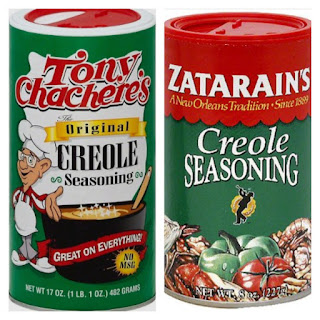Taste Showdown #3 - Louisiana Brand vs Zatarain's Fish Fry

How many of you love a great fish fry? (I’m raising both my hands and feet on this one!) When I lived in south Louisiana, I used to host Friday night fish fries with fried catfish fillets, homemade potato salad, green peas, crawfish pasta and French bread. My friends and family enjoyed ourselves to the point of gluttony. In preparing my fish, I preferred to use packaged fish fry mixes vs cornmeal. In my opinion, cornmeal was too heavy and too grainy to my taste and the cornmeal often fell off during the cooking process. The package fish fry mixes are much lighter because they are composed of both corn flour and a little cornmeal. My paternal grandmother Lu(cille) prepared fried fish with the Zatarain’s Fish Fri mix. When I got my first apartment home, I began using both the Louisiana Brand Fish Fry and Zatarain’s Fish Fri mixes (depending upon which brand was on sale). Both mixes are usually avail...





